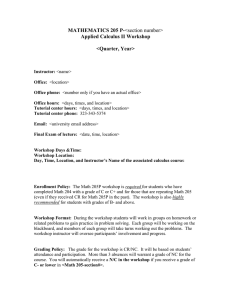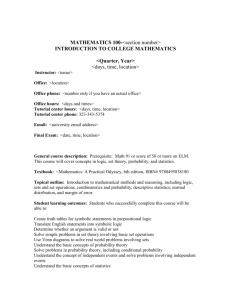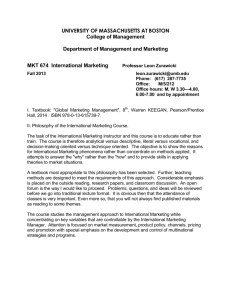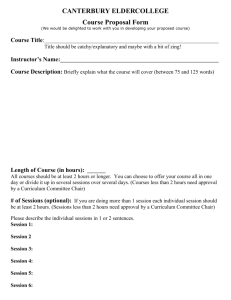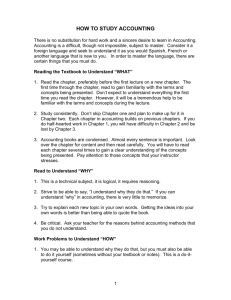How to succeed in Math
advertisement
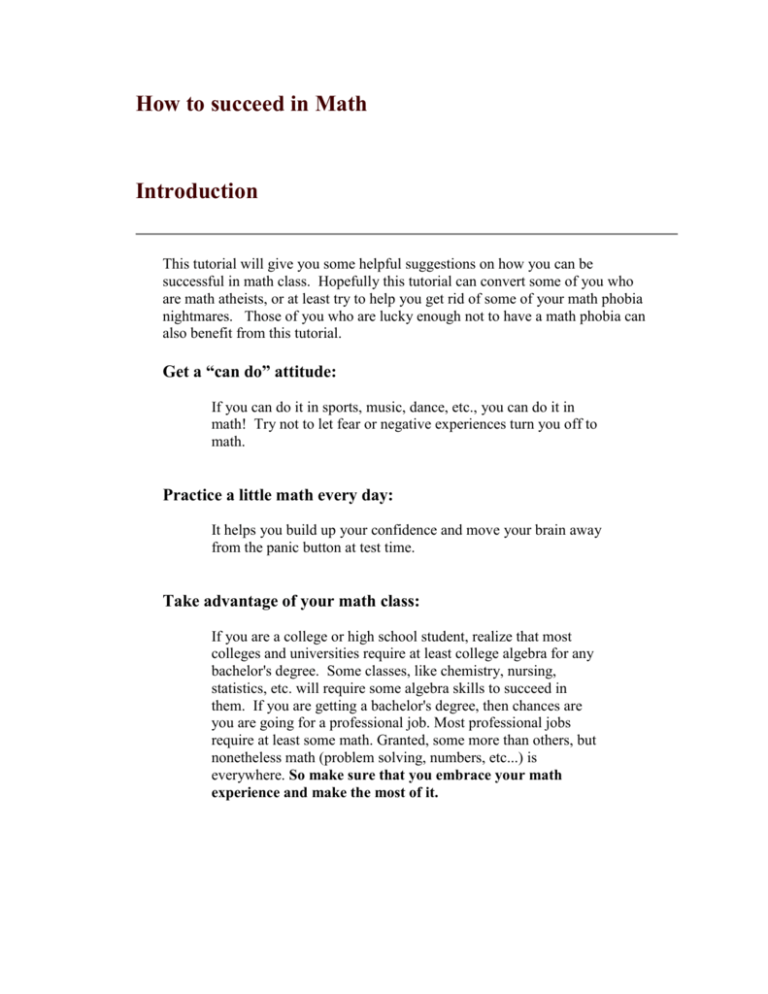
How to succeed in Math Introduction This tutorial will give you some helpful suggestions on how you can be successful in math class. Hopefully this tutorial can convert some of you who are math atheists, or at least try to help you get rid of some of your math phobia nightmares. Those of you who are lucky enough not to have a math phobia can also benefit from this tutorial. Get a “can do” attitude: If you can do it in sports, music, dance, etc., you can do it in math! Try not to let fear or negative experiences turn you off to math. Practice a little math every day: It helps you build up your confidence and move your brain away from the panic button at test time. Take advantage of your math class: If you are a college or high school student, realize that most colleges and universities require at least college algebra for any bachelor's degree. Some classes, like chemistry, nursing, statistics, etc. will require some algebra skills to succeed in them. If you are getting a bachelor's degree, then chances are you are going for a professional job. Most professional jobs require at least some math. Granted, some more than others, but nonetheless math (problem solving, numbers, etc...) is everywhere. So make sure that you embrace your math experience and make the most of it. Attend class full time: Math is a sequential subject. That means that what you are learning today builds on what you learned yesterday. Even problems based on a new math concept will need some old skills to work them. (Think: Can you work problems with fractions if you don’t know the multiplication tables?) Keep up with the homework: It sounds simple but your time is limited, you have a job to go to, etc. Think of it this way: No homework, no learning. Homework helps you practice the applications of math concepts. It’s like learning how to drive: the longer you practice, the better your driving skills become and the more confidence you will have on the road. If you only read the driver’s manual, you’ll never learn to drive with confidence and skill. We suggest you try some of the unassigned problems, too, for extra practice. Try to understand the math problems: When you work homework problems, ask yourself what you are looking for and how you are going to get there. Don’t just follow the example. Work the problem step-by-step until you know why you are doing what you are and have arrived at the solution. If you follow the what, how, and whys, you’ll know what to do when you see a similar problem later. Use index cards to study for tests: Here’s how you do that: When studying for a test, make sure you can understand the problems on each math concept as well as work them. Then make the index cards with problems on them. Mix the index cards (yes, shuffle the cards to mix them up) and set the timer. Start working the problems in each card as it is dealt to you. Oh, yeah, hide your textbook! This will simulate a math test taking experience. Ask questions in class: Don’t be ashamed to ask questions. The instructor WILL NOT make fun of you. In fact, at least one other person may have the same question. Ask questions outside of class: OK, so like most people, you don’t want to ask questions in class, OR you think of a question too late. Then go to the instructor’s office and ask away. Pay attention in class: Math snowballs. If you don’t stay alert to the instructor’s presentation, you may miss important steps to learning concepts. Remember, today’s information sets the foundation for tomorrow’s work. Don’t talk in class: If you have questions, please ask the instructor. The information you get from classmates may be mathematically wrong! And if it isn’t related to math info for this class, save it for outside the classroom. Read the math textbook and study guide: Yes, there’s a reason why we ask you to spend all that money on them. If you look carefully, you will see that your book contains pages with great examples, explanations and definitions of terms. Take advantage of them.
